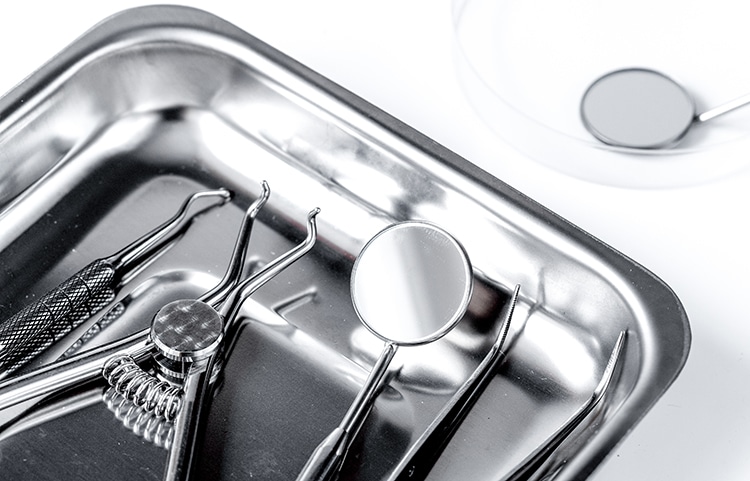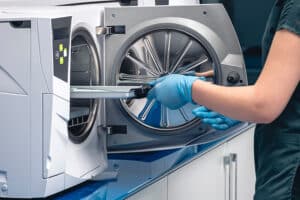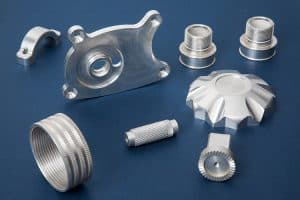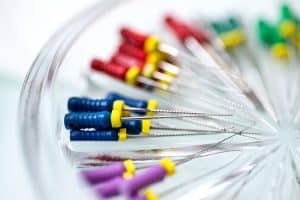A critical factor in ensuring the longevity and safety of stainless steel surgical instruments is their resistance to corrosion. A naturally occurring process, corrosion is the destruction or deterioration of a material when the substance is in contact with air, water, or chemicals like acids.
Chromium is central to combating corrosion in surgical instruments. A vital component in stainless steel, chromium naturally forms an oxide layer that shields the tools from corrosion, maintaining their integrity and sterility. However, in certain challenging environments, this protective layer may not be sufficient, leading to the risk of oxidative wear and other forms of corrosion.
Here, we’ll outline specific challenges with corrosion in stainless steel surgical instruments and how ME-92 biochrome coatings can protect against oxidative wear to improve safety and performance.
Naturally-Occurring Stainless Steel Oxidation: Process and Benefits
Strong, durable, biocompatible, and relatively inexpensive, stainless steel is a top choice for surgical instruments and medical applications. Furthermore, the material is coveted for its corrosion resistance, primarily due to the presence of chromium. Here is a brief overview of the stainless steel oxidation process and the benefits this process provides to stainless steel surgical instruments:
- Chromium Reacts with Oxygen: Stainless steel contains a significant amount of chromium, typically at least 10.5% by mass. When stainless steel is exposed to oxygen in the air or in an aqueous environment, chromium in the steel reacts with the oxygen. This reaction is a natural and automatic process that occurs at the molecular level.
- A Chromium Oxide Layer Forms: The reaction between chromium and oxygen leads to the formation of a thin layer of chromium oxide (Cr2O3) on the surface of the stainless steel. This layer is extremely thin, often only a few atoms thick, but it effectively covers the entire surface.
- The Result — Passivation and Protection: The chromium oxide layer acts as a passive film, preventing further oxidation of the iron in the stainless steel. It essentially seals the surface, making it less reactive and much more corrosion-resistant. Furthermore, this passive layer is self-healing; if it is scratched or abated away, it will re-form instantly in most cases.
This naturally occurring chromium oxide layer offers several key benefits, especially in the context of medical instruments and surgical tools:
- Corrosion-resistant: The primary benefit of the chromium oxide layer is its ability to resist corrosion. By preventing the underlying steel from reacting with oxygen, moisture, and other corrosive substances, this layer extends the lifespan of the steel.
- Passive: This layer is considered “passive,” meaning it doesn’t react easily with other substances. This passivity prevents further oxidation of the underlying metal, helping maintain the integrity of stainless steel instruments.
- Self-repairing: If the chromium oxide layer is scratched or mechanically disrupted, it can self-repair as long as there is sufficient oxygen.
- Non-reactive Surface: The layer creates a non-reactive surface, which is crucial for medical and surgical tools. It ensures that these instruments do not react with medications or biological tissues during medical procedures.
- Cleanliness and Sterilization: The non-reactive nature of the chromium oxide layer also means that it does not harbor bacteria or viruses, making it easier to sterilize — vital in medical environments to prevent cross-contamination and infections.
- Aesthetic Quality: The chromium oxide layer imparts a characteristic luster and shine to stainless steel, which is visually appealing and helps identify the instruments’ wear and cleanliness.
- Temperature-Resistant: The chromium oxide layer contributes to the high-temperature resistance of stainless steel, enabling its use in various sterilization processes, including autoclaving.
Why Oxidation Doesn’t Equal Full Protection
The oxidation process in stainless steel is not absolute in its protective capabilities. If this protective layer is damaged or not fully intact, the underlying stainless steel becomes vulnerable to corrosion. A variety of conditions can compromise the chromium oxide layer’s effectiveness, some of which we’ll explore here:
Chemical Exposure
Exposure to certain chemicals can degrade or dissolve the chromium oxide layer. In medical environments, this could occur due to exposure to cleaning agents or sterilization chemicals
- Acids: Exposure to strong acids can be particularly harsh on stainless steel. Sulfuric acid, hydrochloric acid, and certain organic acids can attack the chromium oxide layer. The extent of corrosion depends on the concentration and temperature of the acid. Even less aggressive acids can cause damage over time, especially at higher temperatures.
- Alkalines: Strong alkaline solutions (bases) can also affect the protective layer. While stainless steel generally has good resistance to bases, extremely high concentrations, particularly at elevated temperatures, can cause corrosion.
- Chlorides and Halides: Chlorides, commonly found in salts, bleach, and certain disinfectants, are particularly aggressive. They can cause localized breakdown of the chromium oxide layer, leading to pitting (formation of small sharp cavities in the surface), crevice corrosion, and stress corrosion cracking. Other halides, like fluorides and bromides, can also be corrosive.
- Oxidizing Agents: While the chromium oxide layer itself is an oxide, overly aggressive oxidizing conditions can lead to its breakdown, particularly in the presence of chlorides.
Mechanical Damage
Physical abrasion or damage to the surface, including scratching, grinding, or any form of impact, will break the continuity of the protective layer, exposing the underlying metal. Here’s a more in-depth look at how mechanical damage can affect stainless steel:
- Scratching and Abrasion: The most common form of mechanical damage is through scratching or abrasion. While the layer can self-repair in the presence of oxygen, deep or extensive scratches may penetrate the layer, exposing the underlying metal to corrosion.
- Surface Grinding and Polishing: When grinding, polishing, or other surface finishing processes are done incorrectly, the stainless steel surface could be more prone to corrosion due to residual stress, introduction of surface contaminants, or alteration of the surface texture.
- Erosion: In environments where the stainless steel is exposed to high-velocity fluids (liquid or gas), erosion can occur. This erosion can wear away the protective layer, particularly in areas of turbulence or where particles in the fluid impact the steel.
- Cavitation: This is a form of mechanical damage that occurs when vapor bubbles formed in a liquid collapse on the surface of the steel. It is a common issue in high-speed rotating equipment. The collapse of these bubbles can be violent, damaging the protective oxide layer.
- Fatigue: Repeated mechanical stress can lead to fatigue in stainless steel. While fatigue itself does not directly cause corrosion, the micro-cracks and fractures resulting from fatigue can disrupt the chromium oxide layer, making the steel more susceptible to corrosion.
- Metal-to-Metal Contact: When stainless steel is in contact with other metals, especially those less noble, it can lead to galvanic corrosion. The mechanical friction between the metals can also break down the oxide layer, accelerating the corrosion process.
Extreme Temperatures
Both very high and low temperatures can impact the integrity of the chromium oxide layer. High temperatures can cause scaling and reduce the layer’s effectiveness, while at low temperatures, the layer may form less effectively.
Low Oxygen Environments
The self-repair mechanism of the chromium oxide layer relies on the presence of oxygen. In environments where oxygen is limited or absent, like in particular crevices or under deposits, the layer cannot re-form if damaged, leading to increased vulnerability to corrosion.
Improper Cleaning or Handling
Using steel wool or other iron-containing tools for cleaning can deposit iron particles on the surface, which can rust and break down the protective layer.
Understanding these conditions is crucial for maintaining the integrity of stainless steel surgical instruments and medical devices. It also underscores the importance of additional protective measures like ME-92® Biochrome (TDC) coatings in environments where these conditions are likely to occur.
Protect Your Investment
ME-92® ensures a thin, precise coat that improves surface hardness and provides significant value through increased safety and performance. Beyond increasing wear life, ME-92® metallic coatings can be tailored to your requirements. As a metallurgical and materials consulting, research, and testing firm, ME-92® is here to help OEMs and medical, design, and manufacturing engineers reach beyond the capabilities of bare stainless steel.






